
This is an interview with sculptor Mark Andrew of Eugene Oregon. In this interview, we started using a new process in which the individual responds to a set of written questions. This was followed by a phone conversation. This allows us to cover members who can’ t be interviewed in person. The following are Mark’s responses:

MA: Thank you to the Northwest Stone Sculptors Association for the opportunity to introduce myself to its talented membership. I have been delighted with the newsletter and thrilled with the wealth of information shared at the symposiums. I saved years of trial and error by attending the gathering at Camp Brotherhood, WA.
Although I am a new member, I have accepted the challenge of directing the Silver Falls Symposium August 25-29,1999. This is a big leap for me. However leaping into the unknown has been a constant in my life. Helping in the production of 40 stone carvings over five days is enormously exciting! I am pleased to step forward in service for other sculptors.
My personal devotion to the carving profession attained the quarter century mark this year. Seasoned by anguish and joy in seeking a livelihood with mallet and chisel, I can safely speak of myself as “experienced”. I am fully devoted to my trade and have crafted my adult life to the unabashed pursuit of carving.
(Mark responds to questions about his history:)
MA: At seventeen, my family moved to Europe. My eyes were opened wide. Extensive travels throughout the region and school in Switzerland changed my conceptions toward lifestyle and molded my passion for artistic expression. (Mark mentions several instances of being awed by the beauty of the an he saw.)

Later, while studying architecture at the University of Oregon, I realized that it was the an incorporated into the building that most captured my attention. So I transferred my major to sculpture over exclamations of disappointment from my parents. They knew a successful career in art would be a very long shot
(After returning to Europe in search of further instruction, which he was unable to pursue due to unexpected family obligations), I returned to Oregon and sought commissions to support my learning curve. This “earn while you learn” philosophy has served me well to this day. For progress to occur, the time spent and the skills required must be rewarded.
I carved constantly and continuously sought opportunities that would pay. My enthusiasm was contagious and others remembered me when possibilities arose. I carved signs for restaurants and shops, murals for homes, decorated garden gates and restored broken antique furniture; anything that would cover expenses and hone my skills.
To immerse myself in carving, I chose community living during the 1970’s. Gathering in an intentional community of people committed to simple living on beautiful land was extremely enriching. I lived my art and under these conditions talent blossomed. I have often longed for the apprenticeship experience, which is so important to passing along knowledge and philosophy_ Lacking this opportunity, I invented a time and place to teach myself the hard way.

I encourage group sharing and living arrangements as a survival tool for the artist Banding together may be more productive and pleasurable for many creative people. (In the 1980’s he and his family wound up in Carmel California drawn by its reputation for art and high-end homes.) My growth curve surged off the chart as the financial need pushed my ambition. I said, “yes” to every job possibility. I needed the income. The “earn while you learn” philosophy was projected to new heights. Every month was a roller coaster of artistic energy and financial drama. I kept pushing all my resources toward reaching a level of support where the pressure would ease. Occasionally, I picked up blocks of stone or wood to produce sculpture on speculation. These were shown and sold at local shows. Some of the pieces were reproduced as bronzes.
Truthfully, even in the well-endowed communities around Carmel, art remains a tough sell, but my effort was rewarded.
Always just in time to “chase the wolf from the door” I carved like a well-oiled machine: entry doors, furniture, limestone fireplaces, alabaster sculptures, custom bronze hardware, murals, bronze editions of wildlife, even works in steel. It became necessary to be in the studio every day. Despite every effort, no steady “cash cow” had emerged to cover the basics. I was feeling tired.

Oregon beckoned me home in 1995. Since my return, my good fortune has brought me several carved entry door and mural commissions, a line of cast stone garden art, and the opportunity to carve and exhibit, as public art, my largest carving in limestone: “Berry Baskets” (a large work developed from a quarter scale clay model.) In 1997 I married Robin Winfree, a woman I had admired all my adult life. We set out to tear down her old barn and build a large new studio (completed last fall).
SS: Mark described this “dream” studio to me: this 44’x44′ building includes a 22’x24′ heated indoor studio with skylights and lots of windows. One wall is equipped with a heavy duty grid for clamping down slab work while working them in the vertical position (murals and doors), allowing him to see the piece as it will be seen. Work benches line one wall. His tools include table saw, welder, compressor, kiln, and a collection of Swiss haud carving tools and carbide burrs. He has also installed directional lights in each corner of this room to view his pieces in different light. Outside a set of double doors is a 3-bay carport, with 14′ high roof and a major beam for hoisting big stones (this area is designated for outdoor carving and very dusty jobs). The building also includes an office/gallery space (l2’xI4′) and a guest room which might one day be used by a student/apprentice.

MA: The foundations are laid now for decades to come where I hope a great body of sculpture will be produced. My hope had been to secure enough commissions to stay in business full-time: however for continuous employment_ I realize that more connections have to be made over the next few years. The more people who know me. the better the opportunity to inspire work in my field. I have taught carving at the Eugene Waldorf School. as well as at the University of Oregon Craft Center. hoping to inspire young people with new possibilities in creativity.
My thoughts on sculpture: My attachment to sculpture is influenced by the materials of the trade and the physical effort required in pursuit of the work. The raw material is of the earth, is basic, yet already having a story to tell through spirit and geology. The carving process is pure exhilaration. Each block has history within, and I am creating history by making it into a work of art which moves forward in lime with a special status. When I am sculpting, I am channeling a stream of the very great creative energy of all life. It is very nourishing to be a conduit of that !low!

As a positive, inspired spark of energy, I inspire like energy and together all this good improves the quality of life for all. Our creative time in this life cycle is short, and my intention is to leave future generations my vision of beauty. I am part of a deep continuing family of sculptors who have left their mark for the wonder and enjoyment of future people. I feel my place and sense the lingering vibrations of past masters when I see and touch their work. It is an honor to continue this legacy of artistic expression. All of my work has been representational. Abstract shapes have intrigued me, but never enough to produce such art. In all likelihood, the extensive commissioned work required a more straight-forward realism. My portfolio shows mainly artwork with wildlife themes and plant forms. (He says he is moving toward more work with the human figure.) I keenly appreciate the harmony of landscapes. Studying nature brings its harmony into my work.
I allow myself to feel deeply while carving the stone to its final form. I resonate right to the tip of the tool. Eyes, fingertips, muscles, posture, willpower: all align in a harmonious balance. All is directed toward finding the form I know is locked within.

Truthfully, I get overwhelmed sometimes. Plans change, faults appear. Riding the waves of highs and lows takes courage. It takes courage to convince yourself that you already know the finished form. Learn each day to believe in yourself more, to trust your instincts and follow your intuition, and your sculpture will radiate.
Success is measured in many ways. For me, a reasonable livelihood while producing sculpture, with time to enjoy the wonders of our Earth is reward enough.
Sincerely, Mark Andrew.


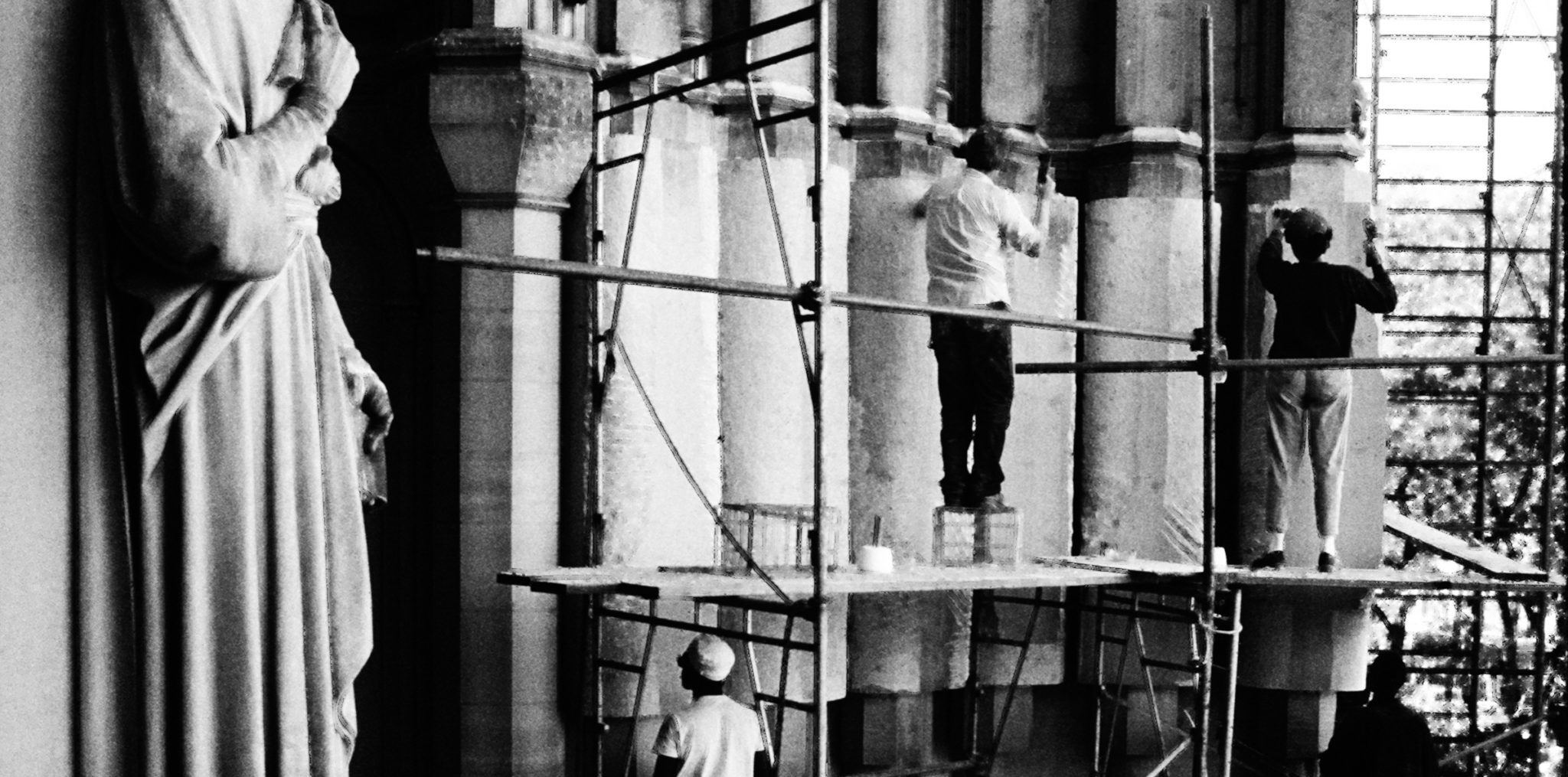
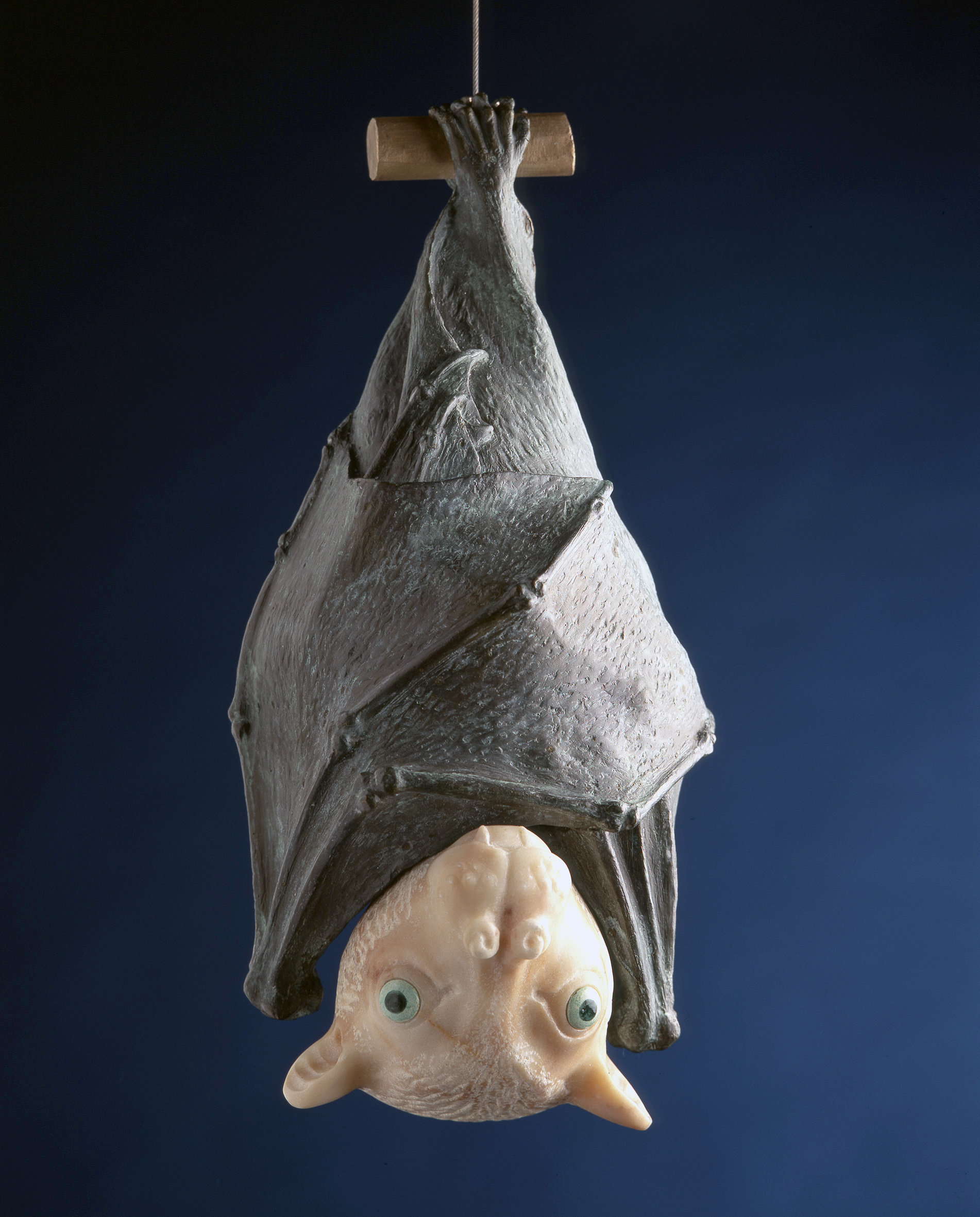
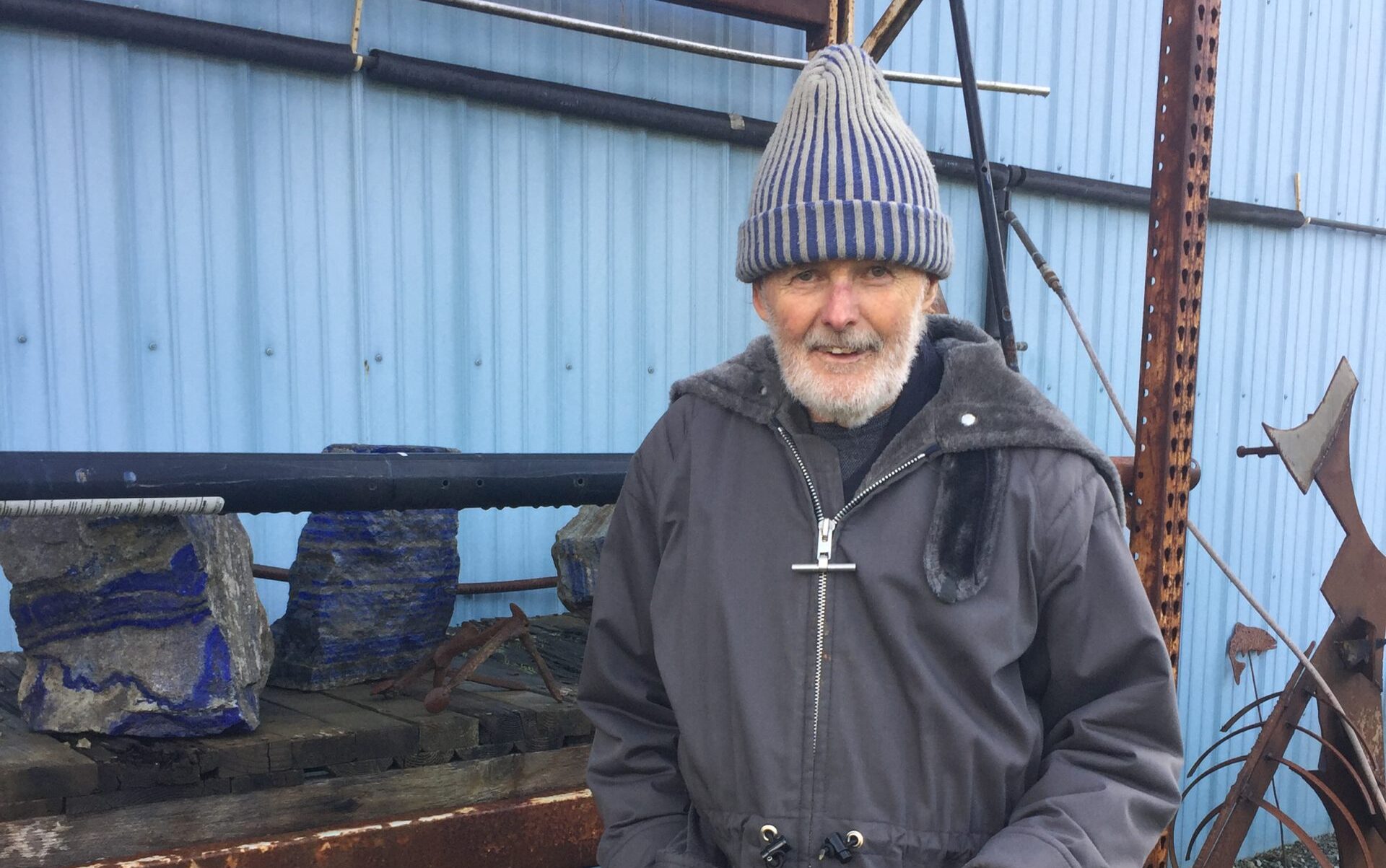
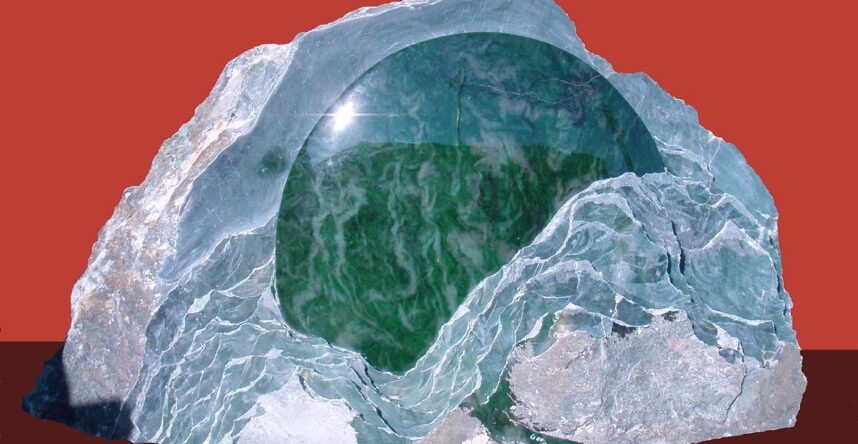
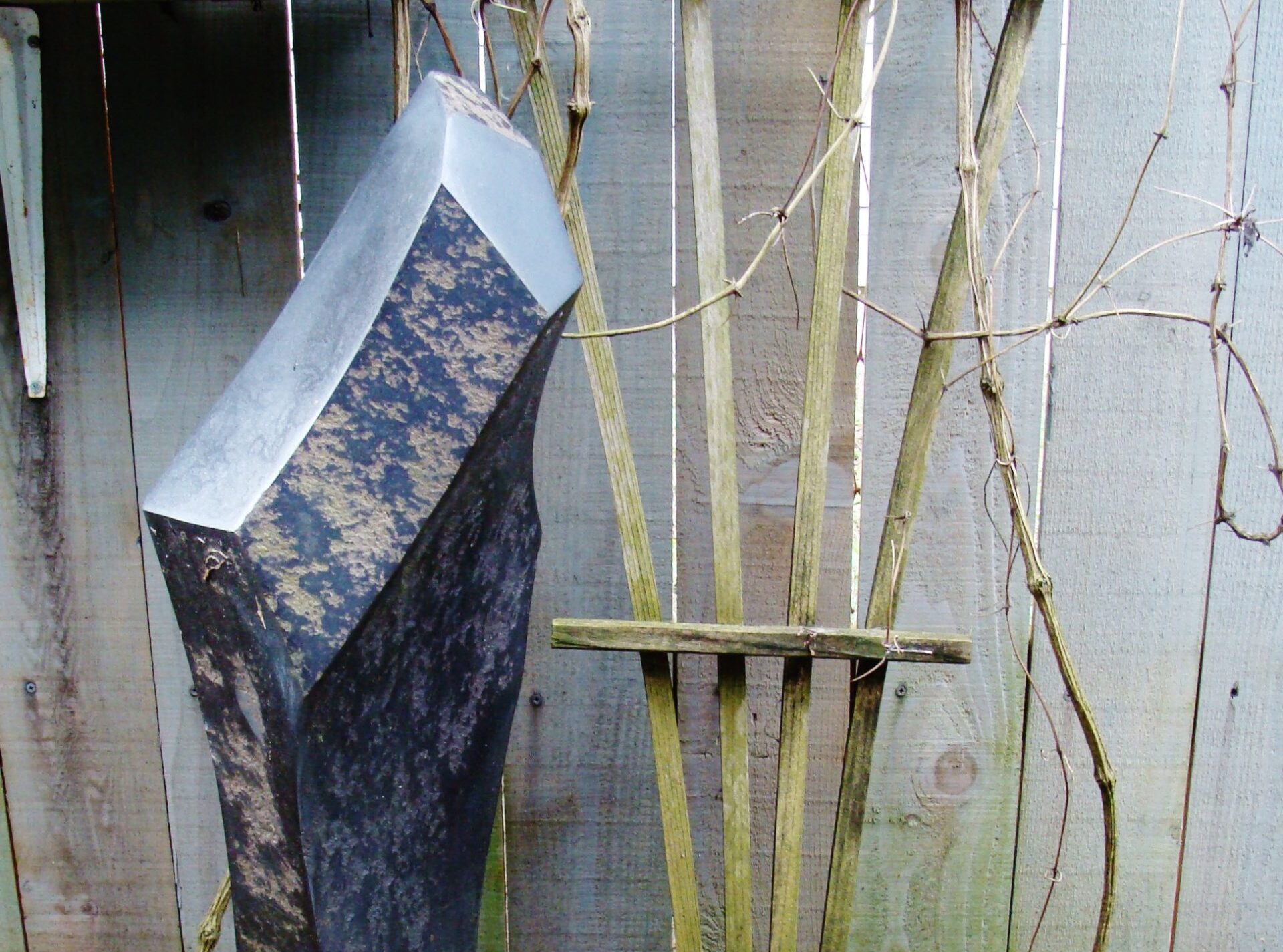
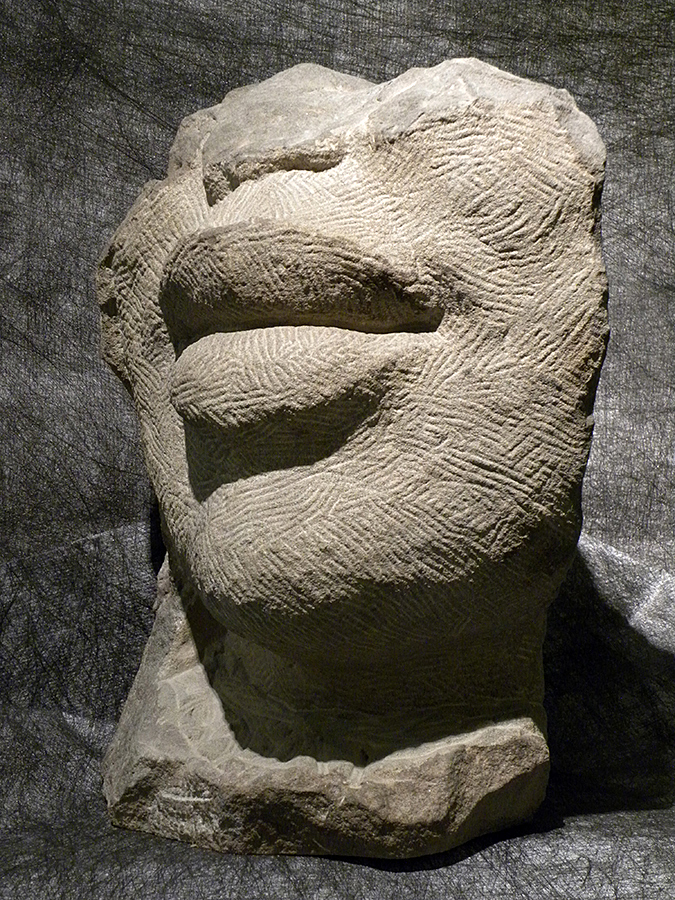
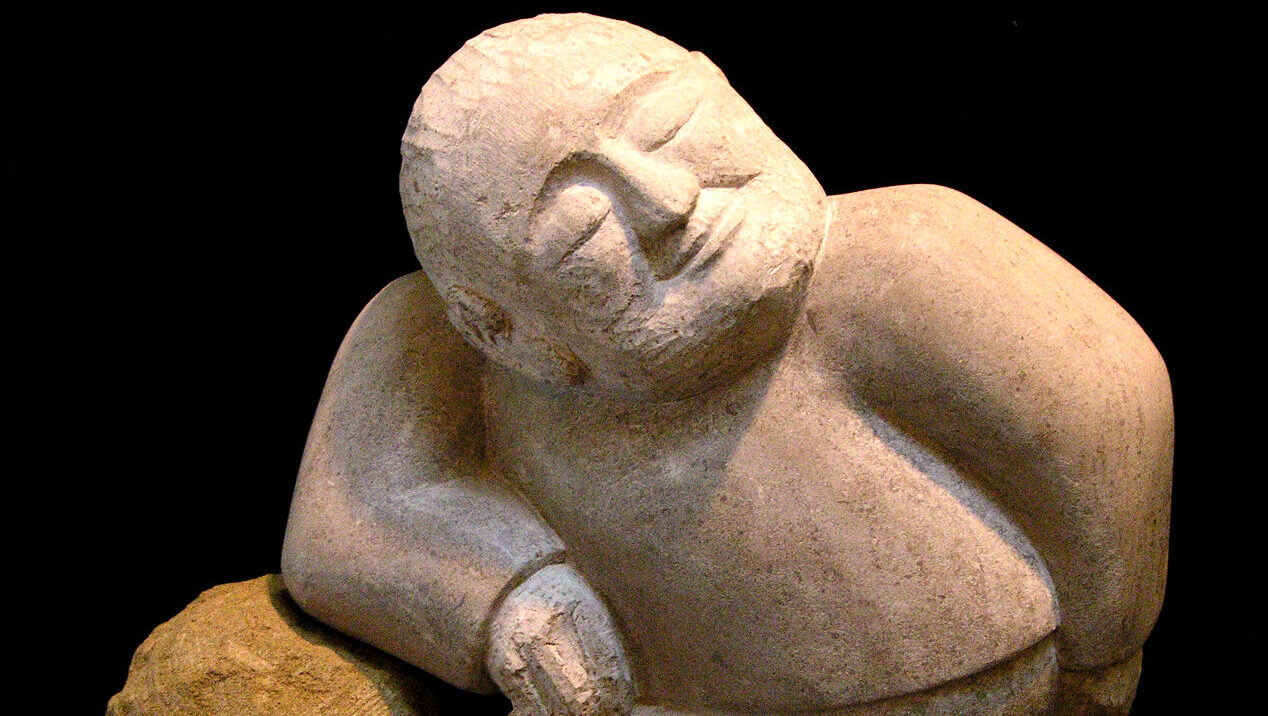


We need some kind of descriptive text here.